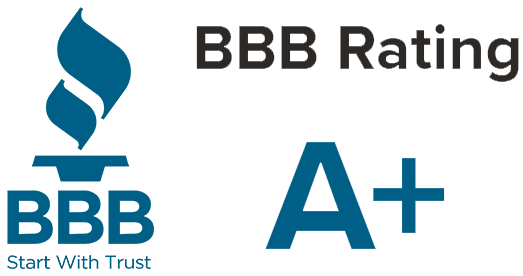How Government Contractors Can Successfully Pivot to DoD Contracts
By WALLY ANGEL, ROSE FINANCIAL SOLUTIONS
Government contractors are increasingly looking to pivot from serving civilian agencies—such as the Department of Health and Human Services (HHS) or Department of Energy (DOE)—to securing contracts with the Department of Defense (DoD).

This shift is driven by several converging forces:
- Federal budget reallocations favoring defense programs
- National security priorities under renewed focus
- Defense modernization efforts requiring new vendors, technologies, and services
As more contractors recognize the revenue potential within the DoD, the importance of transforming internal operations—especially in finance and accounting—cannot be overstated.
At ROSE, we specialize in helping government contractors scale smartly with Finance as a Service (FaaS), building the financial infrastructure they need to succeed in the highly regulated DoD landscape.
Understanding the DoD Landscape
While the federal acquisition process is complex across all agencies, the Department of Defense introduces new layers of intensity, especially in compliance, cost accounting, and audit requirements.
Civilian vs. DoD: What’s Different?
- DFARS Compliance: DoD contracts adhere to the Defense Federal Acquisition Regulation Supplement (DFARS), which supplements the Federal Acquisition Regulation (FAR) with stringent rules on cybersecurity (e.g., CMMC Level 2 for protecting Controlled Unclassified Information and CMMC Level 1 for protecting contractor financial systems), national security, and defense-specific requirements, unlike civilian contracts that primarily follow FAR and agency-specific supplements.
- Heightened Oversight: DoD contracts face rigorous Defense Contract Audit Agency (DCAA) scrutiny, demanding robust systems for cost tracking, timekeeping, and rate structures, compared to what could be considered lighter oversight from civilian agencies.
- Audit Intensity: Due to DOD’s higher use of cost reimbursable contract types, contractors may be required to submit incurred cost proposals, establish provisional billing rates, and demonstrate an adequate accounting system (e.g., via SF 1408 pre-award surveys), often before contract award—a level of rigor less often seen in civilian contracts.
- Complex Indirect Rates: DoD requires contractors to develop and justify detailed indirect cost pools (e.g., overhead, G&A), which undergo thorough pre- and post-award audits, unlike the simpler rate structures often accepted by many civilian agencies.
According to the June 2024 Government Accountability Office (GAO) report, the DoD continues to roll out the Defense Agencies Initiative (DAI)—a standardized financial management platform aimed at improving audit outcomes and accountability. Contractors must be prepared to mirror this standardization in their own operations.
Financial Implications of the Pivot
Moving from a civilian-focused accounting model to one ready for DoD contracts requires a fundamental shift in how your financial systems operate.
Why Traditional Systems Fall Short
Legacy systems—especially those reliant on manual entry, spreadsheets, or generic accounting software—can’t keep up with DCAA requirements. Common pain points include:
- Delayed or incomplete indirect rate calculations
- Inadequate segregation of allowable and unallowable costs
- Limited visibility into contract-level profitability
The Need for Real-Time and Audit-Ready Systems
To thrive in the DoD space, contractors need:
- Integrated financial dashboards tied to contract deliverables
- Automated compliance checks and timekeeping tools
- Documentation systems aligned with DCAA audit procedures
At ROSE, we’ve built the Easby platform to address exactly these challenges. Easby provides near real-time financial reporting, audit trail functionality, and a scalable structure designed for contractors of all sizes entering or growing in the DoD space. With Easby, you can confidently support everything from small SBIRs to large cost-plus-award-fee contracts.
Lessons from the Field
Many of our clients have successfully navigated the pivot to DoD—and we’ve seen what works.
Ted Rose, our founder and CEO, and Wallace Angel, a Client CFO advisor at ROSE, regularly advise clients on:
- Building compliant indirect rate structures from the ground up
- Streamlining project controls to support timely billing
- Preparing for DCAA pre-award, post award and incurred cost audits
One common takeaway? Start early. Many contractors wait until they’re under contract to update their systems. By then, it’s often too late to avoid costly retroactive changes or failed audits. Additionally, many cost reimbursable contracts require a “pre-award survey” conducted by DCAA that must be completed before an award can be made. In many cases, the use of a letter of adequacy from a third-party accounting firm is acceptable as part of a proposal's submission, but a full DCAA review may be required later.
Policy Shifts and Strategic Opportunities
The current policy environment under the second Trump administration favors increased defense spending, simplified procurement channels, and incentives for innovation in national security.
Key Trends:
- Expansion of Other Transaction Authority (OTA) contracts
- Renewed focus on Made in America and domestic manufacturing
- Funding boosts to AI, cybersecurity, and unmanned systems
These trends create an ideal opportunity for innovative, agile contractors—but only those prepared to meet DoD expectations.
ROSE’s Mastermind sessions help clients translate these shifts into growth. We break down policy changes and help clients understand how to:
- Adjust indirect cost recovery strategies
- Position their financial systems for scaling
- Anticipate DCAA audit triggers
Actionable Steps for Contractors Entering the DoD Market
Thinking about making the shift? Here’s what you can do now:
Prepare Your Accounting System for DCAA Approval:
- Implement job cost accounting
- Separate direct, indirect, and unallowable costs
- Track time daily with detailed labor distribution
- Establish written policies and procedures
- Ensure you accounting system meets CMMC Level 1 standards
Know When to Bring in a Fractional CFO
You don’t have to go it alone. A Fractional CFO can help you:
- Design indirect cost pools and provisional rates
- Oversee audit preparation and incurred cost submissions
- Align project budgets with corporate forecasting
ROSE’s FaaS model gives you access to senior financial leadership without the burden of full-time overhead.
Align Finance and Project Controls
Long-term success in the DoD market means tightly integrating your financial team with program managers and operations. That means:
- Forecasting burn rates by project
- Tracking contract milestones tied to billing
- Using relevant cost data to support change orders and re-negotiations...Read more in the ROSE Community.
Want to read the full article?
📢 Join ROSE Business Forum & Events to gain exclusive access to industry insights, discussions, and networking opportunities tailored for GovCons, Nonprofits, and Growing Businesses.

Wallace Angel, CPA
Wallace “Wally” Angel is a strategic CPA with more than 20 years of experience in the government contracting and consulting environments with companies ranging from start-ups to $800M. His government contracting expertise includes FAR and DCAA compliance, indirect rate calculation, forward pricing, proposal writing, pricing, and cradle to grave contracts management and system design and implementation.
Share this article:
Visit Us On:




